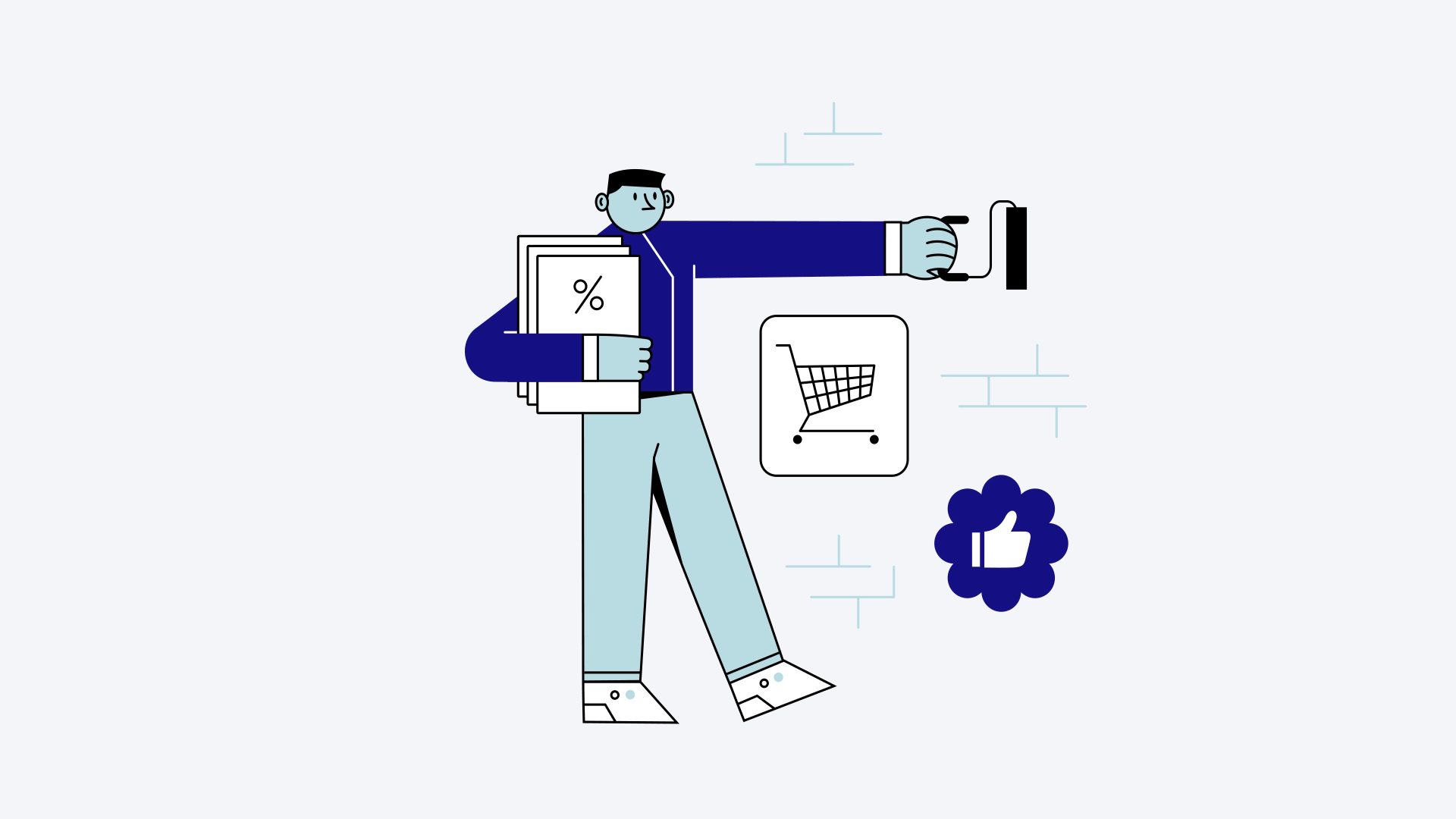Prepare for a consumer-focused transformation! In the year 2024, AI in marketing tailors experiences like never seen before. Uncover the range of opportunities awaiting.
Last year at this time, the top global brands attempted to use ChatGPT to craft their marketing forecasts. It didn’t quite work out.
The content felt stagnant and general, and more notably, OpenAI’s touted creation couldn’t gaze into the future: it simply lacked sufficient data to predict what lay ahead.
Humans: 1. AI: 0.
A year down the line, the scenario has changed. This doesn’t imply AI can now magically foresee the future, but it’s continually becoming more intelligent and deeply ingrained in our surroundings.
And now, it’s all about personalization. As brands can generate tailored content on an unprecedented scale, meaningful interactions are set to play a more crucial role than ever.
Indeed, we will all be collaborating with AI in 2024—that’s not a surprising projection—and this will offer opportunities to enhance our workflow, operations, and marketing approaches. Here’s how AI will make its presence felt in the marketing realm in 2024.
01. Technology will become conversational
In the year 2024, conversational commerce is set to redefine customer interactions. The fusion of sophisticated chatbots and messaging platforms enables seamless engagements between brands and customers. This personalized, real-time communication not only elevates the customer journey but also simplifies the path to making a purchase.
In early November of 2023, OpenAI unveiled the introduction of custom GPTs, enabling the creation of bespoke chatbots without the need for coding. This caused a sensation online, resulting in the development of bots for a multitude of applications: from a programmer chatbot to one generating alt-text descriptions for images, and even a GPT optimized for assisting other GPTs.
Brands like Amazon’s Alexa are harnessing AI to integrate shopping assistant features into their product for eCommerce transactions. WhatsApp and Facebook Messenger are also gearing up to add a touch of social commerce to the tech giant’s portfolio.
How can marketing agencies leverage this trend? Voiceflow is a collaborative no-code tool for designing, prototyping, and constructing virtual conversational assistants that can be integrated with your client’s Wix Studio websites.

Original image sourced from Zapier blog
02. Virtual Influencers will make a statement
In 2023, the standout marketing campaign was Snoop Dogg’s smoke-free fire pit, but not all brands have access to celebrity influencers for such extensive campaigns. Consequently, smaller brands and startups are embracing virtual influencers—essentially branded avatars—to shape their narratives.
The landscape of influencer marketing is undergoing a futuristic evolution as these computer-generated personas emerge as potent brand representatives. Check out Lu do Magalu and Lil Miquela as instances of virtual influencers in action. With Instagram followings of 6.7 million and 2.6 million, respectively, these digital individuals wield more influence than many real-world influencers. Another notable case is Aitana, an AI influencer from Spain earning over $10K weekly through brand collaborations.
Furthermore, brands with iconic mascots are also seizing the opportunity to digitize their characters, encompassing the likes of Barbie, the Geico Gecko, and KFC’s Colonel Sanders.
The rise of virtual influencers signifies a departure from traditional brand partnerships, empowering companies to craft their own influencers and oversee the creative process entirely. For brands with enduring characters, the chance to flesh out their personalities will breathe new life into their brands in unexpected ways.

Lil Miquela on Instagram
03. UGC content is set to dominate your feed
People still prefer learning from other individuals. In response to the proliferation of AI-generated content, brands are turning towards User-Generated Content (UGC) to tap into the collective creative power of the masses.
Consumers actively engage in brand storytelling by crafting and sharing content, aiding brands in garnering social validation and fostering community. This transformation empowers brands to establish genuine connections with their audience, drawing on the distinct viewpoints and advocacy of their customer base to weave compelling, trust-building narratives.
Doritos launched Doritos Legion of Creators, a platform where users can create branded visuals and videos that Doritos then shares on its social media platforms. Let’s not overlook GoPro’s marquee initiative: the Million Dollar Challenge. Since 2018, the company has encouraged customers to invest in the latest GoPro model and utilize it to capture “life’s epic moments.” The 2023 edition saw 55 creators receive a portion of the million-dollar prize pool, bringing $18,181.81 each to the lucky winners alongside numerous social assets for GoPro. Anticipate witnessing more of this in 2024.
04. Gen AI will revolutionize your data strategy
While the cookie-pocalypse isn’t a new concept, it is slated to take effect in the upcoming year. In 2024, the phasing out of third-party cookies will propel first-party data to the forefront. Brands are concentrating on cultivating direct connections with consumers, emphasizing transparency and consent to gather valuable insights without sparking privacy concerns.
Currently, approximately 80 percent of advertisers rely on third-party cookies and must explore novel ways to engage with customers. Apple’s iOS 14 app tracking permission mandate has been detrimental to adtech companies, with Facebook, Snap, Twitter, and YouTube collectively witnessing a $10 billion dip in revenue across two quarters post the change.
It’s no surprise that the utilization of data is surging: not just due to the extinction of cookies, but also because first-party data holds significant value for targeting. A study conducted by Google and Boston Consulting Group revealed that brands leveraging first-party data for critical marketing functions are experiencing up to a 2.9X revenue boost and a 1.5X spike in cost savings.
Combining generative AI with first-party data sources will empower brands to deliver customized messages to customers.their highly engaged clientele. This will trigger a loyalty impact, granting the most proactive clients with progressively personalized content.
The same principle applies conversely. Intuit utilizes first-party information utilizing its Generation Z consumers’ responses to Generation AI content. In October, the firm introduced its ‘Automagical Aura Generator,’ offering users their unique Generation AI image of their financial horoscope.
05. Extended-form video will experience a resurgence
In the era of brief content, longer-form videos are experiencing a noticeable comeback in 2024. Platforms are adapting to facilitate prolonged storytelling, enabling brands to convey intricate stories and captivate audiences on a deeper level. This revival signals a shift towards more engrossing and substantial content experiences that are more challenging for Generation AI to generate at scale and naturally require the human element to thrive.
Lately, Instagram has been trialing lengthier reels to directly rival YouTube shorts. Additionally, webinars, which initially soared during the pandemic, have continued to be a top recommendation among brands aiming to engage customers for extended durations.
06. AI is poised to transition from a tool to a collaborative counterpart
In 2024, generative AI will be more easily accessible to broader groups of audiences. Despite the technology no longer being novel (and advancing at a rapid pace), larger, more potent models constructed on extensive datasets, along with self-directed agents and multimodal functionality, will pave the way for AI with a greater degree of comprehension and reasoning similar to that of humans. This encompasses proactive decision-making, collaborative inventiveness, and dynamic learning and adaptability.
We are observing this trend manifest in various manners, such as Google Gemini. Envision the robustness of your clients’ websites when AI streamlines the coding process (and eliminates the laborious work) from the ground up.
07. Zero-click and voice search to revolutionize SEO
The landscape of Search Engine Optimization (SEO) is undergoing a revolutionary transformation in 2024 due to the surge of zero-click and voice search. There will be fresh aspects to ponder: strategies on building a brand amidst declining CTR, considerations of tone, accents, and a more conversational approach to searches, and refinements in your current SEO approach to adapt to this new reality. Projections suggest that by 2025, half of all online searches will be conducted through voice search.
Contemplate this: as more individuals navigate the internet on screen-free devices like Alexa, what implications might that hold for your enterprise? And how could your firm secure a top spot on the SERP? Explore the Tenten SEO Learning Hub for solutions to all your SEO queries.
However, bear in mind: the prime resource will always be your audience. Agencies will have to engage their audience in dialogues to comprehend their desires (and how they express them), both on and off the SERP.
If 2024 marks the year where AI establishes connections with consumers, the main query becomes: in what way will you, as a marketer, adapt?


